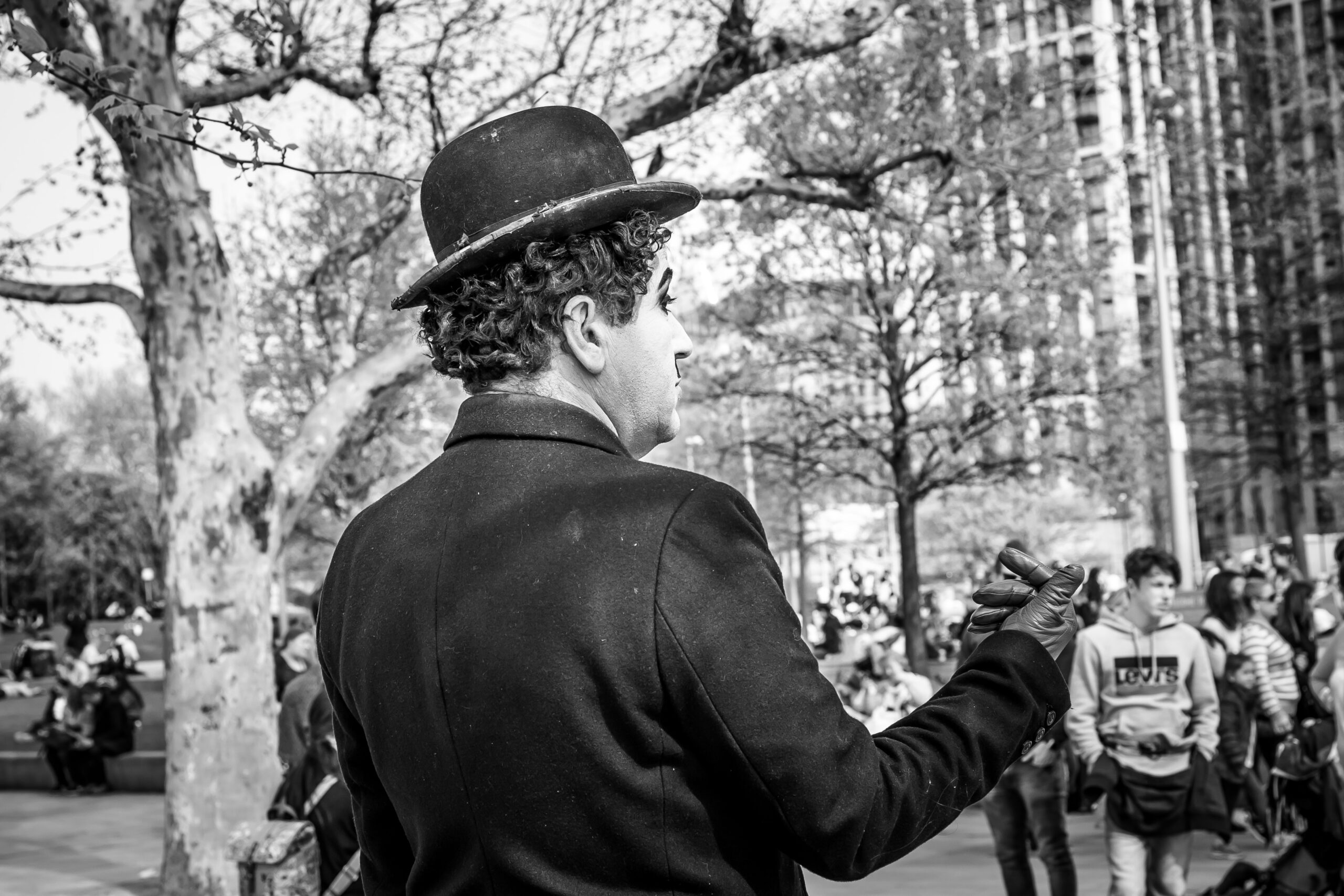The top 5 Charlie Chaplin movies
February 12, 2023

Charlie Chaplin was a legendary British actor, filmmaker, and comedian who rose to fame in the early 20th century. He is widely regarded as one of the greatest and most influential filmmakers in the history of cinema, and his impact on the art form is still felt today. Chaplin was known for his comedic style, which combined physical humor, satire, and pathos, and for his iconic character “The Tramp,” a lovable and enduring figure who embodied the spirit of the working-class and the struggles of everyday life.
Chaplin was born in London in 1889 and began performing on the stage at a young age. He quickly rose to prominence as a performer, and in 1913 he signed with the Keystone Film Company in Hollywood. Over the next two decades, he made over 80 films and established himself as one of the most popular and beloved entertainers of his time. He was a master of silent film, and his films were known for their innovative techniques, memorable music, and timeless themes.
One of the defining characteristics of Chaplin’s films is their enduring appeal. Despite being made nearly a century ago, they remain popular and widely watched today, and they continue to resonate with audiences around the world. This is due in large part to Chaplin’s unique style and his ability to create characters and situations that are both hilarious and deeply touching. Whether he was portraying the struggles of the working class, the foibles of the rich and powerful, or simply the joys and sorrows of everyday life, Chaplin’s films always touched a nerve with audiences and left a lasting impression.
In addition to his comedic skills, Chaplin was also known for his social and political commentary. He was an outspoken critic of war and fascism, and many of his films were infused with his political views. For example, in “The Great Dictator,” he famously mocked Hitler and the Nazi regime, and in “Modern Times,” he satirized the dehumanizing effects of industrialization and the struggles of the working class. Through his films, Chaplin not only entertained his audiences, but also inspired them and challenged them to think about the world around them.
Despite his incredible success and widespread popularity, Chaplin’s life was not without controversy. He was often the subject of scandal and controversy, and his political views and personal life often made headlines. Despite these challenges, however, he remained one of the most beloved and respected figures in the world of entertainment, and his influence on the art of film continues to be felt to this day.
In conclusion, Charlie Chaplin was a true master of his craft, and his contributions to the world of film and entertainment are immeasurable. His comedic style, his innovative techniques, and his timeless themes continue to entertain and inspire audiences around the world, and his legacy as one of the greatest filmmakers of all time is secure. Whether you are a lifelong fan or a newcomer to his work, a viewing of any of Charlie Chaplin’s films is sure to be a memorable and enjoyable experience.
This is the top 5 of what we think are the best Charlie Chaplin movies:


“City Lights” (1931)
“City Lights” is a timeless classic, a silent film released in 1931 and directed by, written by, and starring Charlie Chaplin. It is considered one of the greatest films of all time, and its impact on cinema is immense. The film tells the story of the Little Tramp, played by Chaplin, as he tries to help a blind flower girl and falls in love with her, while also trying to survive in a city where life is harsh and poverty is widespread.
One of the defining characteristics of “City Lights” is its blend of comedy and pathos. Chaplin’s comedic talent is on full display in the film, with his signature physical humor and impeccable timing making the audience laugh at every turn. However, the film also explores more serious themes, such as the struggles of the poor, the loneliness of city life, and the cruelty of people who take advantage of the vulnerable. This balance between comedy and drama is what makes “City Lights” so powerful and enduring.
Another standout aspect of the film is its visual style. Chaplin was a master of mise-en-scene, and “City Lights” is no exception. The film’s cinematography is stunning, with a keen eye for detail and a keen sense of composition. The cityscape is depicted as a series of towering skyscrapers, making the Little Tramp look small and powerless in comparison. This visual style is a perfect representation of the film’s themes, as it shows the enormity of the city and the many obstacles that the Little Tramp must overcome.
The film’s score, composed by Chaplin himself, is also noteworthy. The music is used to great effect, emphasizing the emotions of the scene and guiding the audience’s reactions. In a time when silent films relied on intertitles to convey dialogue, the music played a crucial role in telling the story.


“Modern Times” (1936)
“Modern Times” is a 1936 film directed by and starring Charlie Chaplin. It is a comedy that is set in the industrial era, and is a reflection on the struggles of the working class during the Great Depression. The film follows the antics of Chaplin’s iconic character, The Tramp, as he tries to survive in a world dominated by machines and corporations.
The film opens with The Tramp working in a factory, operating a machine that is designed to tighten bolts. He becomes so engrossed in his work that he begins to have a mental breakdown, and the scene sets the tone for the film’s commentary on the dehumanizing effect of industrialization. The Tramp finds himself in and out of jail, as he tries to find work in a world where jobs are scarce. He eventually befriends a young, unemployed woman, who becomes his companion in his quest for employment.
One of the film’s most memorable scenes takes place when The Tramp is hired as a singing waiter at a high-end café. He starts singing the song “Smile” and the entire café joins in, creating a joyful moment in the film that contrasts with the bleakness of the times. The Tramp and the young woman eventually find work as part of a group of street performers, and the film ends on a hopeful note, as they look forward to a brighter future.
“Modern Times” is widely regarded as one of Chaplin’s best films, and is considered a masterpiece of comedic cinema. It is notable for its use of silent film techniques, such as pantomime, to convey its message, as well as its imaginative visual gags and clever writing. The film’s satire is sharp, as it takes aim at the capitalist system and the way it exploits the working class.
The film also touches on the theme of technological progress and its impact on society. Chaplin’s portrayal of The Tramp struggling with the machine in the factory is a poignant commentary on the fear of being replaced by machines, which was a common concern during the time. The film also portrays the way in which technology can be used to control and manipulate people, as evidenced by the “feeding machine” scene, in which The Tramp is force-fed by a machine in a prison.
“Modern Times” is a timeless classic that is still relevant today. Its message about the need for humanity and kindness in a world dominated by machines and corporations still resonates, and its comedic scenes continue to entertain audiences. The film is a testament to Chaplin’s talent as a filmmaker and performer, and remains one of the most iconic films of all time.


“The Kid” (1921)
“The Kid” is a 1921 silent film directed by and starring Charlie Chaplin. It is considered one of Chaplin’s greatest works, and is widely regarded as a classic of early cinema. The film tells the story of a tramp (played by Chaplin) who stumbles upon a baby and decides to raise him as his own. Over time, the tramp and the child, named John, develop a strong bond, and the film follows their adventures as they face the challenges of life on the streets.
One of the most memorable scenes in “The Kid” takes place in a dream sequence, where the tramp imagines himself as a wealthy man with a beautiful home and all the trappings of success. This scene is a commentary on the American Dream and the idea that success and happiness can be achieved through hard work and determination. The scene is also a reflection on the contrast between the harsh realities of life on the streets and the idealized world of the American Dream.
The film is notable for its mixture of comedy and pathos, as it explores the relationship between the tramp and John. Through their interactions, Chaplin conveys the themes of love, sacrifice, and the importance of family. The film is also a commentary on the societal issues of poverty and abandonment, as it shows the harsh realities faced by children living on the streets.
Chaplin’s performance as the tramp is one of the highlights of the film, as he uses his trademark comedic style to bring humor and heart to the character. His physical comedy is used to great effect, as he conveys the tramp’s struggles and frustrations in a way that is both funny and touching.
“The Kid” is a landmark film in the history of cinema. Its impact on the industry can be seen in the way it influenced later films that explored the themes of poverty, family, and the American Dream. The film is a testament to Chaplin’s talent as a filmmaker and performer, and remains one of the most beloved films of all time. Its message about the importance of love, family, and community continues to resonate with audiences, and its comedic moments continue to bring laughter and joy to movie-goers.


“The Gold Rush” (1925)
“The Gold Rush” is a 1925 silent film directed by and starring Charlie Chaplin. The film is set during the Klondike gold rush of the late 19th century and follows the adventures of Chaplin’s iconic character, The Tramp, as he travels to the gold fields in search of fortune. Along the way, he encounters a cast of quirky and eccentric characters, and the film is filled with comedic moments, heartwarming scenes, and dramatic set pieces.
The film opens with The Tramp and his friend, Big Jim, traveling to the gold fields by steamship. Along the way, they encounter various obstacles, including harsh weather conditions and the dangerous terrain of the Chilkoot Pass. The film’s portrayal of the challenges faced by gold seekers during the Klondike gold rush is both accurate and humorous, as Chaplin’s comedic touch adds a lightheartedness to what was a difficult and treacherous journey.
Once in the gold fields, The Tramp finds himself in a series of humorous and heartwarming situations, as he tries to find his fortune. He befriends a prospector named Black Larson and the two of them set out to find gold together. One of the film’s most memorable scenes takes place when The Tramp cooks a shoe for dinner, as he and Black Larson are stranded in a cabin during a snowstorm. This scene is a classic example of Chaplin’s ability to take a dire situation and turn it into a comedic moment.
The film’s romantic subplot revolves around The Tramp’s relationship with Georgia, a dance-hall girl. The Tramp and Georgia fall in love, and their relationship provides some of the film’s most touching moments. The film’s ending is particularly memorable, as The Tramp and Georgia are reunited and dance together in a snowy landscape, bringing the film to a heartwarming conclusion.
“The Gold Rush” is considered one of Chaplin’s greatest works, and is widely regarded as a classic of silent cinema. Its mixture of comedy, romance, and drama, combined with Chaplin’s iconic performance as The Tramp, make it a timeless and entertaining film that has stood the test of time. The film’s themes of hope, love, and perseverance continue to resonate with audiences, and its comedic moments continue to bring laughter and joy to movie-goers. “The Gold Rush” is a testament to Chaplin’s talent as a filmmaker and performer, and remains one of the most beloved films of all time.


“The Great Dictator” (1940)
“The Great Dictator” is a 1940 comedy-drama film directed by and starring Charlie Chaplin. It is a political satire that lampoons Adolf Hitler and the Nazi regime, and is widely regarded as one of the greatest films of its era. The film was released just as the Second World War was starting, and its bold political stance made it a controversial film at the time of its release.
The film follows the story of a Jewish Barber who, after a lengthy stay in a hospital, returns to find that the country he knows and loves has been taken over by a tyrannical dictator named Adenoid Hynkel. The Barber is mistaken for Hynkel and is drawn into a world of political intrigue and deception. The film is a parody of Hitler and the Nazi regime, and uses humor and satire to critique the political and social issues of the time.
Chaplin’s performance as the Barber and as Hynkel is one of the highlights of the film, as he uses his comedic talent to bring humor and pathos to the characters. His portrayal of Hynkel as a bumbling, clueless despot is a masterful use of physical comedy, and his performance as the Barber is filled with heart and compassion.
The film is also notable for its use of sound, as Chaplin famously broke with his tradition of making silent films and incorporated a soundtrack, including musical score and dialogue. The film’s score, composed by Chaplin himself, is one of the most memorable in film history, and is an integral part of the film’s emotional impact.
One of the most memorable scenes in the film takes place at the end, when Chaplin delivers a powerful monologue in which he speaks directly to the audience about the importance of compassion and freedom. In this scene, Chaplin abandons his comedic persona and speaks from the heart about the dangers of fascism and the need for peace and love. This scene is a testament to Chaplin’s commitment to using his art to address political and social issues, and is a powerful moment in the film.
Share this Top 5 List!
The Top 5





